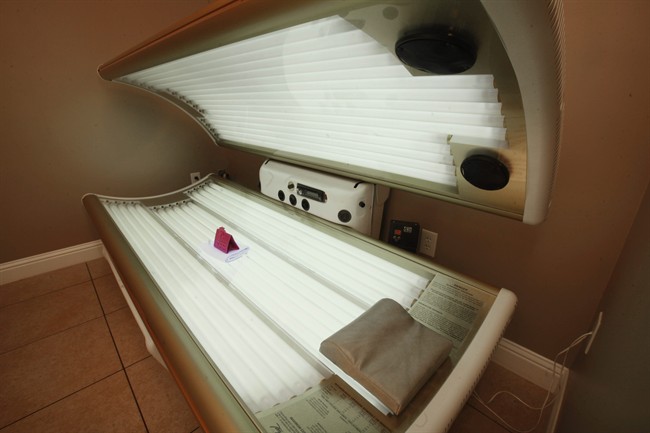TORONTO – Ontario Health Minister Deb Matthews announced Thursday that the province would soon table legislation banning the use of tanning beds for anyone under the age of 18.

The new measures would also require indoor tanning salons to request identification from anyone who appears less than 25 years old, as well as prevent them from marketing to youth or teens.
If the legislation is approved, Ontario would become the fifth province – alongside Quebec, British Columbia, Nova Scotia and Newfoundland – to ban the use of indoor tanning beds for minors.
Saskatchewan, New Brunswick, and Prince Edward Island currently have voluntary guidelines in place for tanning salons requiring patrons to give informed consent that they are over 18 years of age. In Manitoba, parental consent is required for anyone under 18 years of age.
The move to ban the use of tanning beds to minors follows the implementation of similar by-laws in Mississauga, Oakville, and Peel Region this past autumn.
“There’s been mounting scientific evidence that links UV radiation to skin cancer, including melanoma,” Dr. Samir Gupta, chair of the Ontario Medical Association section on Dermatology, told Global News. “Studies have shown that artificial tanning significantly increases your risk of melanoma.”
But just how much of a risk tanning beds pose to your health is the subject of some debate in the medical community.
Getting inside the tanning bed debate
According to Gupta, a decision by the World Health Organization’s International Agency for Research on Cancer (IARC) to re-classify tanning beds as a carcinogenic to humans “set the ball rolling” on tanning bed legislation both in Canada, and around the world.
The IARC’s decision to put tanning beds in the same category as cigarettes and asbestos was based on research the organization conducted on the dangers of UV tanning beds in 2006.
The results of that research, which looked at over 20 separate epidemiological studies dealing with the dangers associated with tanning beds, claimed a 75 per cent increased risk of developing the skin cancer Melanoma in those under the age of 30 who used tanning beds.
There are those in the medical community who take issue with the results of that study, however.
Dr. William Grant is the Director of the Sunlight, Nutrition and Health Research Center. He believes the IARC’s findings were flawed because they didn’t take into account skin type.
There’s no debate among doctors that those with fairer skin are more at risk for developing skin cancer.
“We certainly know that people with fair skin, blonde hair, a history of freckles – their risk is much higher,” Gupta said. “But skin cancer does not select – it can affect people with every kind of skin type.”
But according to Grant, the relationship between UV exposure and incidences of Melanoma isn’t reflected in society at large.
“People who are chronically exposed to UV, like construction workers and farmers, they don’t have any higher risk of Melanoma than the average population,” Grant said.
Another problem in the study, according to Grant, is the lack of differentiation between indoor and outdoor tanning.
A vitamin D deficiency?
Much of Grant’s work today focuses on the potential benefits of vitamin D, the most readily available source of which is Ultraviolet light – both from the sun, and from artificial sources like UV tanning beds.
“Vitamin D has been shown in many studies to reduce the risk of many types of disease, many types of cancer, cardiovascular disease, diabetes, multiple sclerosis, dementia, autoimmune disease, et cetera,” Grant said.
“This is a threat to the whole medical establishment, which is built on treating diseases, selling drugs, treating cancer, and sending people to hospitals.”
According to Grant, the benefits of increased vitamin D far outweigh the potential health hazards associated with UV exposure.
Others in the medical industry reject this assertion.
“Vitamin D can be attained through supplementation and other means,” Gupta said. “Foods like salmon, orange juice, and various vitamin supplements can give you vitamin D in a safe and healthy manner.”
“You don’t have to tan.”
For Dr. Barry Lycka, founder of Canadian Skin Cancer Foundation, the debate over skin cancer and UV exposure hits especially close to home.
“My father died of Melanoma,” Lycka told Global News. “Every day I work with people who have Melanoma, and it’s scary some of the stuff we see.”
One of Lycka’s concerns is the much stronger doses of UV radiation your body consumes in certain tanning beds, which can in some cases more than double the direct exposure from sunlight.
It should be noted that getting an accurate finding on just how much more UV radiation your body absorbs from a tanning bed as opposed to sunlight is hard to get a handle on, owing to the large variety of tanning beds in use around the world.



Comments